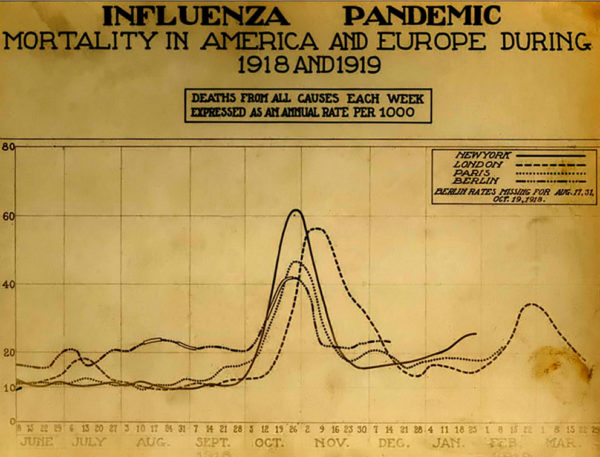The world isn’t much safe even hundred years after the flu pandemic devastated the whole world. The 1918 flu pandemic that infected 500 million people and killed 50 to 100 million around the world.
The movie-like apocalyptic scenario could become a reality any time as the world is as vulnerable to a deadly flu outbreak as it was a century ago. The next pandemic can kill more than 300 million people worldwide, according to an expert. The reason behind the vulnerability is our addiction to cheap chicken and pork and the factory farm industry that supplies them.
“Somewhere out there, a flu virus is boiling up in the bloodstream of a bird, bat, monkey or pig, preparing to jump to a human being,” says Dr Jonathan Quick, chair of the Global Health Council.

“When that combination from birds and beasts finds its way into a person, the resulting new human strain can kill us more easily because it is unknown to us and our bodies have zero immunity to it. This is most likely how the Spanish flu took hold,” Dr. Quick wrote in an article in Daily Mail.
Dr Quick says factory farms present one of the greatest potentials for catastrophic disease because they pack animals together by the million in conditions that can be fetid incubators of disease. These giant industrial farms were the birthplace of H1N1 swine flu that emerged in 2009 and killed up to an estimated 575,400 people worldwide.
“Reducing the risk posed by farm animals requires us all to fight factory farming. We can vote with our mouths,” he says. He recommends less consumption of meat and dairy products, eating organic meat and buying from places that don’t source from factory farms. That would mean entirely avoiding eating meat at most of the popular fast-food joints.
“The most frightening type of infectious flu we know of today — the H5N1 strain of the virus (known popularly as ‘bird flu’) — also came from an animal. It probably jumped to a human through contact with a diseased bird slaughtered on a poultry farm or in one of Hong Kong’s markets. H5N1 killed its first human victim in 1997 in Hong Kong. From 2003 to the start of 2016, there have been 846 confirmed human cases of H5N1 virus infection in 16 countries. That may not sound like many people. At the moment, H5N1 is not very contagious. But this strain has killed more than half the people it has infected. By comparison, the Spanish flu epidemic of 1918 had a mortality rate of between just 2 and 3 per cent,” Dr. Quick writes.
Vaccine could be one defence against a flu pandemic but Dr. Quick says a vaccine does not ensure protection from every kind of flu strain.
“Such an innovation could limit, and possibly even prevent, a calamitous global influenza pandemic. But the search for a universal flu vaccine is late in coming. It was only in 2011 that The Lancet published research that demonstrated the inadequacy of our flu vaccines.Today’s seasonal flu vaccination does not protect you from all the flu strains. Vaccines can typically protect against three or four types of flu virus at most,” Dr. Quick writes.










Comments
NOTE: The North Shore Daily Post welcomes your opinions and comments. We do not allow personal attacks, offensive language or unsubstantiated allegations. We reserve the right to edit comments for length, style, legality and taste and reproduce them in print, electronic or otherwise. For further information, please contact the editor or publisher, or see our Terms and Conditions.